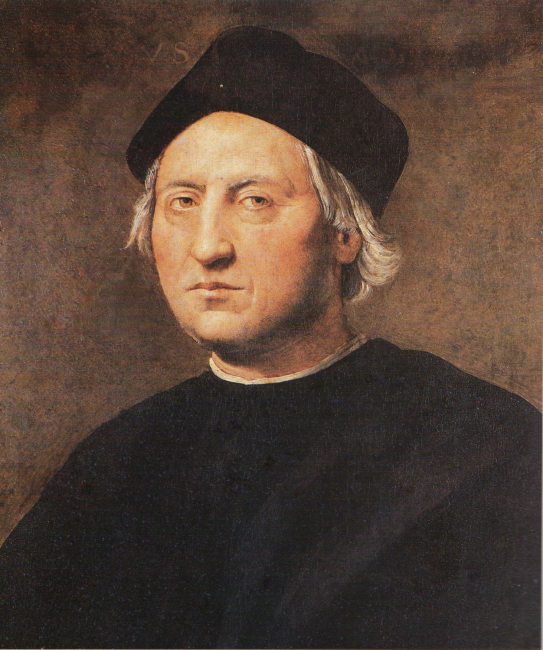Cristoforo Colombo
Cristoforo Colombo was born in Genoa in 1451, from Domenico Colombo and Susanna Fontanarossa.
There is little information about his childhood, but surely he set sail for the first time when he was very young, probably at the age of 14.
He started to engage in trade, by serving the Centurione, Di Negro, Imperiali and Spinola Genoese families. His travels brought him to Lisbon, where he came to live for a short period of time. After turning back to Ligury, he had the chance to sail to the North Seas up to Iceland.
For the last time in Genoa, he got married and shortly after he moved with his wife Filipa Moniz Perestrello to Madera, where he tried to establish his own trade business, without success.
Finally, from the island of Madera he moved back to Portugal.
The cultural environment he lived in, and the book Il Milione by Marco Polo and the Imago mundi by Pierre d'Ailly but also the Historia rerum ubique gestarum by Papa Pio II Piccolomini probably pushed his curiosity and his ambition to find a new shorter route towards the Indies, sailing west and crossing the Ocean: Europe was said to be larger and the length of the maximum circle was said to be inferior than in reality by popular belief.
As it is known, Cristoforo Colombo had to face fights and refusals before obtaining the approval for his project, even if many stories about these episodes are indeed legends.
What is certain is that he signed an agreement with the Spanish sovereigns on April 17th, 1492.
Colombo sailed for the port of Palos de la Frontera on August 3rd of the same year, with a ship named Santa Maria, and two caravels, the Pinta and the Niña.
Colombo’s journals show the reality of his travel and testify dishertenments and hopes, enormous difficulties, but there is no sign of mutiny from the crew.
On October 12th he landed on one of the Bahamas islands, which he called San Salvador.
From there the pioneers moved to Cuba and then Haiti, where he established a colony and the fort “Navidad” was built. The remaining men had the task to explore those territores and to look for gold.
Since he returned to Spain in March 1493, Colombo brought back gold, tobacco, parrots, and also ten Taino “Indians” to be offered to the Spanish sovereigns as tangible signs of the potentials of the "India Island beyond the Ganges". The admiral was welcomed with great honours and triumphant celebrations.
This first expedition towards Asia was followed by other three travels.
Thanks to the new missions new islands and territories were discovered up to Panama, but dissatisfaction began to spread among the crew members and at the Spanish court, due to the fact that the immense promised treasure had not been found. The good fortune of Cristoforo Colombo soon vanished, he was even arrested for a short period of time, before obtaining the permission to sail one last time.
After the fourth travel he then decided to retire to private life in Valladolid, where he died in 1506, essentially by accident. The heirs faced a long trial against the inland revenue in order to maintain the obtained privileges.
The documents and the explorer’s will found in the State Archive of Genoa portray the story of his life and the one of his ancestors and prove the Genoese origins of the sailor, which was discussed for a long time.

